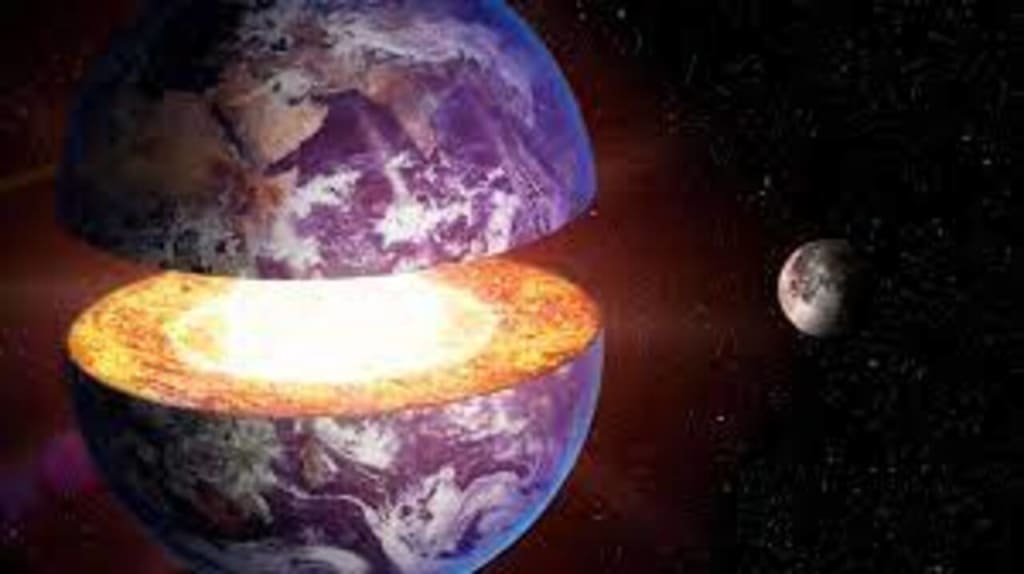What If We Cut Earth in Half?
A What If Story

Consider a scenario where splitting our planet, Earth, into two halves becomes a reality. The concept of having two Earths might seem even more appealing than one. But have you ever wondered about the process of cracking our planet in half and the consequences it would entail? Which of the two halves would the Moon orbit, and why would neither of these halves be sustainable in the long run? In this "what if" scenario, we explore the hypothetical scenario of slicing Earth in half.
There are various methods one could attempt to divide the planet, such as using an asteroid to crack it open, detonating nuclear weapons to blow it apart, or engaging in extensive digging. However, regardless of the approach, it would be an incredibly challenging task.
Using an asteroid for this purpose would be perilous. The asteroid responsible for creating the massive 160-kilometer-wide, 40-kilometer-deep crater in South Africa was even larger than the Chicxulub asteroid that led to the extinction of the dinosaurs. To split the Earth, a space rock much larger than that would be required, and the consequences for humanity would be disastrous.
Blowing up the planet would also pose significant challenges. To match the energy released by the dinosaur-killing asteroid, billions of nuclear bombs would be necessary, arranged in a ring around the globe. However, this approach would likely be highly ineffective and chaotic.
Digging through the planet might appear as the least destructive option, as humans regularly dig into the Earth. But the task at hand would be extremely demanding. To begin cutting through the planet, one would need to penetrate the Earth's crust, ideally at its thinnest point, which lies beneath the ocean where the crust is as little as five kilometers thick. Beyond the crust, the mantle awaits, with a thickness of about 2,900 kilometers. This layer would require the most time and effort to traverse.
As drilling progresses, the temperatures and pressures encountered would steadily rise. The mantle consists of partially melted rock, which would make drilling slightly easier. However, the extreme heat would necessitate advanced heat-resistant gear, as temperatures at the top of the mantle can reach 1,000 degrees Celsius, while deeper down, it can soar to 3,700 degrees Celsius.
The subsequent layer to conquer would be Earth's outer core, about 2,200 kilometers thick. Finally, reaching the inner core would expose the drillers to intense heat and unimaginable pressure, 3.6 million times greater than at sea level. Tapping into the core would lead to a violent ejection of molten iron, nickel, and silicates from the mantle, causing catastrophic consequences if drilling were attempted on land.
Upon successfully drilling through the planet and emerging on the other side, the two halves would begin to separate. However, the immediate collapse of each half due to gravity's pull would be inevitable. Powerful winds would rush in to fill the void, and the atmosphere would seek to cover the planet's broken sides, gradually shaping the halves into spheres over millions of years.
The repercussions of splitting Earth would be profound. The magnetosphere, generated by electric currents in the outer core, would be disrupted, leading to the escape of liquid metal into space. Consequently, Earth would lose its magnetic field, leaving us vulnerable to harmful solar radiation. The halves would drift apart, potentially causing the Moon to break free and become a rogue space rock. The disruption in gravity would impact tides, nocturnal animals, and Earth's stability.
Furthermore, the separation would wreak havoc on communication systems reliant on satellites, such as the internet. Satellites' orbits would be destabilized, resulting in potential collisions or their expulsion into space, severely impacting global communication networks.
Life on the divided Earth would require constant transportation between the halves, resembling interplanetary travel. Each half would specialize in different resources, with a significant increase in the cost of goods requiring transportation across space. The implications would be far-reaching, affecting economies, agriculture, and the livelihoods of people.
Nonetheless, this hypothetical scenario sheds light on the multitude of consequences and challenges humanity would face if Earth were ever divided into two halves. In retrospect, experimenting with a less impactful scenario, like splitting the Moon, would have been a wiser choice but, that will be a story for another time






Comments
There are no comments for this story
Be the first to respond and start the conversation.